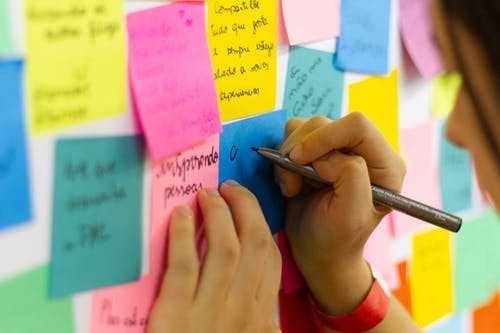Problem-Solving Skills : Steps to Solve a Problem

A problem is an issue or question that needs to be investigated, considered, or resolved; a problem is generally unwelcome and cannot be avoided. Problem-solving skills are required for problem-solving.
What exactly is a problem?
You must proofer solutions for every problem encountered, and problems necessitate problem-solving skills that will assist you in overcoming whatever problem you are confronted with.
Problem-solving skills
Problem-solving skills are required for problem-solving and are highly sought after by organizations because problems will always occur whether you want them to or not and when they do occur, they require special skills to be solved.
Here are problem-solving skills you need to have:
Active listening
A good problem solver is a good listener, to be able to address problems you must first be willing to listen to them in the first place and this requires a whole lot of patience.
There is a difference between hearing and active listening by actively listening it means you are completely focused and clearly understand the details of what is being said.
Analysis
Analytical skill is very important in problem-solving as you have to analyze the problem to know what exactly is the issue and then proofer the necessary solution. This skill basically requires critical and fast thinking.
Research
When solving a problem, you must be able to gather data understand this data and make relevant inquires, when necessary, as a problem solver you cannot afford to not be able to gather and put together data.
Communication
Communication is very important in problem-solving as you will be required to interact with others during the process of problem-solving and you need to be able to interact with others properly so as to ensure proper flow of information and to ensure a fast and accurate job is done.
Decision making
When solving a problem, you will need to make decisions on what should be done and how it should be done.
It is very important to not just be able to make decisions fast but to also be able the right decisions at the right time.
Creativity
Thinking outside the box and do coming up with new ways to do things is what creativity is all about and as a problem solver, you have to be creative.
Team building
As a problem solver, you have to be able to bring people together as you cannot work alone remember two heads are better than one.
You need to be able to not just create a team but create the right team you need and keep them respectfully in line to achieve the goal.
We have now explored the skills required for problem-solving together so the next step is for us to recognize and understand how to solve a problem.
Steps to problem-solving
Just like most things in life, there are steps you are required to following when solving a problem and we are going to be exploring these steps together.
Step 1: Define the problem
Before solving any problem, you must first know what the problem is when did it start, how did it start.
At this stage, you gather all necessary information about the problem know the roots and all the branches it has because a problem in most cases generates other issues.
The Kipling Method: A well-known method to define a problem comes from Rudyard Kipling, a famous poet. The 6 necessary elements to describe a problem include:
- What is the problem?
- Why is it important to fix the problem?
- When did the problem start? What is the deadline to fix it?
- How did the problem begin? What’s its cause?
- Where is the problem happening?
- Who is affected by it?
Step 2: Clarify the problem
After knowing what the problem is you begin to try to gather more data about the problem and try to understand fully what needs to be done how should it be done. At this stage, you want to fully understand the problem and how you will go about it,
Step 3: Define the goals
Here you ask yourself what do I want to achieve what is my aim and how do I go about achieving it, how long do I want to spend on this issue and what will I achieve by solving this problem. By defining the goals, you have a sense of direction and know what you want to do.
Step 4: Identify the cause of the problem
You want to know what caused the problem and how so has to proofer necessary solutions, this is a very important stage as if you don’t know the cause of a problem there is no guarantee of you solving the problem and even if you do solve it how do you prevent it from reoccurring.
Step 5: Generate and evaluate solutions
By identifying the cause of a problem, you can then generate solutions to the problem at this stage your problem-solving skills will be utilized as you have to be creative, make a decision, work as a team, carry out research, communicate with your team (not boss around) and analyze solutions.
You have to come up with multiple solutions and then evaluate these solutions and select the best solution for the job to do this you will engage in the trial-and-error method.
Step 6: Implementation and Evaluation
After analyzing the solutions, you generated you select the best solution and then implement this solution but your work is not yet over you need to evaluate this solution and the result it yields to know if you truly made the right choice if you didn’t then you move back to step 5 and start all over but if your choice gives you the expected result you move to the next step.
Step 7: Continuously improve
Now you have to keep trying to get better so you do not have the same problem arise again make use of the lessons learnt to avoid future problems and improve.
Problems are always bound to occur but with the right management they can be solved and prevented from reoccurring problem-solving skills can be applied in various aspects of our daily lives and I hope this post helps you in solving various problems that may come your way.
If you enjoyed or found this post useful please leave a comment it helps.
Author Bio
Writer comprises full-time and freelance writers that form an integral part of the Editorial team of Hubslides working on different stages of content writing and publishing with overall goals of enriching the readers' knowledge through research and publishing of quality content.
Article Comments
No Comments!
At present there are zero comments on this article.
Why not be the first to make a comment?
Similar Articles
Sponsor
Search Articles
Experts Column
Latest Articles
Featured Articles
Most Popular Articles
















